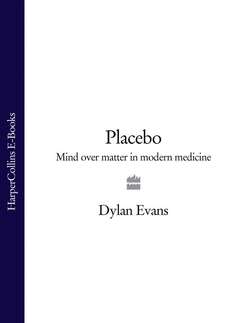Читать книгу Placebo: Mind over Matter in Modern Medicine - Dylan Evans - Страница 18
THE POWERLESS PLACEBO
ОглавлениеIn the late 1990s, two medical researchers at the University of Copenhagen attempted to settle the debate about the placebo effect once and for all. Asbjorn Hrobjartsson and Peter Gotzsche combed through the medical literature much more extensively than anyone had done before, picking out all the studies they could find that included both a placebo group and a no-treatment group.4 They were able to identify a surprisingly large number of such trials – 130 in all. Of these, 114 provided relevant data enabling a proper comparison of the placebo group with the no-treatment group. Using meta-analysis, Hrobjartsson and Gotzsche pooled the results of these studies and concluded that, overall, there was little evidence that placebos had any powerful clinical effects.
This simple conclusion was seized on by the media and reported as proof that the placebo effect was a myth. If they had read the whole study, however, they might not have been so quick to buy Hrobjartsson and Gotzsche’s take-home message. The devil, as always, was in the details. For one thing, the studies examined by Hrobjartsson and Gotzsche fell into two distinct groups. Some had reported their results in binary terms (such as positive versus negative result), while others had used a continuous scale (such as the amount of pain relief). For the binary group, there was a small placebo effect, but the result was not significant by the normal standards of statistical research. So far, then, Hrobjartsson and Gotzsche were justified in saying that there was little evidence that placebos had any effect. For the studies using continuous measures, however, there was a significant beneficial placebo effect. These studies, then, do provide good evidence that placebos can produce clinical benefits.
Furthermore, the range of medical problems covered by the 114 studies analysed by Hrobjartsson and Gotzsche was enormous. In total, forty clinical conditions were examined, from asthma and smoking to menopause, marital discord and schizophrenia. Hrobjartsson and Gotzsche averaged over all these studies and, because there were relatively few in this sample that provided evidence in favour of the placebo effect, the negative view prevailed. But if you did the same thing for virtually any powerful drug, the result would be the same. This is because any kind of therapy that works – be it a drug, a surgical intervention or behavioural therapy – will help people with some conditions and not others. There is no such thing as a universal remedy, a real-life cure-all, a panacea.
Certainly, some people have claimed that placebos are just this. Beecher was largely responsible for floating the idea that placebos can affect virtually every medical condition. Although the evidence on which he based this claim was – as we have seen – deeply flawed, the myth of the all-powerful placebo soon became the established medical wisdom. If Hrobjartsson and Gotzsche had contented themselves with exposing this myth, the path would have been opened for a more realistic assessment of the placebo effect, distinguishing between those conditions that are placebo-responsive and those that are not. But Hrobjartsson and Gotzsche went further, asserting that there was no evidence that placebos had any effects at all.
This, at least was the upshot of their brief conclusion. In the small print, however, they were forced to concede that in some cases there were noticeable placebo effects. For some conditions such as anxiety the results were too variable to allow a simple interpretation. For all sorts of pain, however, there was clear positive evidence of a significant placebo effect. Headaches, postoperative pain and sore knees could all be relieved by a sugar pill. There was, then, some reason to suspect that, in pooling the results of studies involving so many different kinds of medical condition, the true profile of the placebo response was obscured.
The mismatch between the complexity of the data analysed by Hrobjartsson and Gotzsche and the stark simplicity of their conclusion is yet another reminder of the need for caution in getting to grips with the research on placebos. What promised to be the final, definitive word on placebos turned out to be a poor study, full of flaws and capped by an inaccurate summary. If we are to get a good idea of what placebos work for – if, indeed, they work for anything – it seems we must go back to square one again, and look at the evidence bit by bit. Only in this way, proceeding carefully, can we begin to build up a picture of what placebos can really do.
